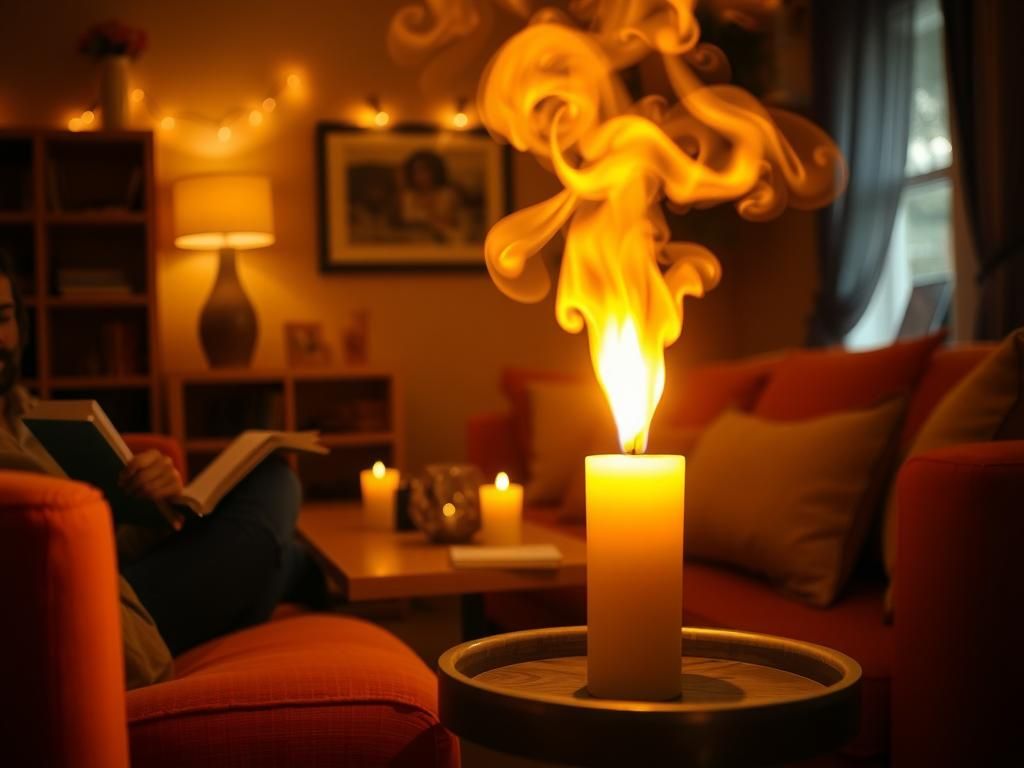Paraffin candle dangers are often overlooked, but they can have a significant impact on your indoor air quality. When you light up your favorite Bath & Body Works candle, you might feel a sense of warmth and comfort. However, what you may not realize is that the delightful fragrances and soothing flicker can come at a cost. This article explores the potential toxins released by paraffin candles and examines whether popular brands like Bath & Body Works are harming your health.
What Are Paraffin Candles Made Of?
Paraffin candles are primarily composed of paraffin wax, a byproduct of petroleum refining. When burned, these candles can release harmful chemicals, which include:
- Toluene – a solvent that can cause headaches, dizziness, and respiratory issues.
- Benzene – a known carcinogen linked to various health problems.
- Formaldehyde – a toxic gas that can contribute to respiratory discomfort and irritation.
These substances can significantly affect your health and well-being, especially for sensitive individuals such as children, the elderly, or those with respiratory conditions like asthma.
How Paraffin Candles Impact Indoor Air Quality
Many people are unaware of how paraffin candles can impact the air they breathe. Lighting a paraffin candle releases soot into the air, which can settle on surfaces and be inhaled. This soot can exacerbate allergies and respiratory issues.
Additionally, the fragrances added to paraffin candles often contain synthetic compounds, which can further compromise indoor air quality. These fragrances may also trigger allergies or asthma attacks.
Some studies suggest that burning paraffin candles can produce the same type of particulate matter found in cigarette smoke. When you burn a paraffin candle, you might not only feel relaxed, but you could also be introducing harmful toxins into your home environment.
Are Bath & Body Works Candles Safe to Use?
While Bath & Body Works candles are marketed as luxurious home fragrances, it’s essential to consider their ingredients. Most of their candles use paraffin wax, combined with synthetic fragrances. Here are some crucial points to consider:
- Check the Ingredients: Before making a purchase, take a moment to examine the ingredients. While some may only contain paraffin wax, others may also include other harmful additives.
- Read Reviews: Research customer feedback regarding their experiences with candle performance, scent, and any concerns about safety.
- Consider Alternatives: If you’re worried about toxicity, consider exploring healthier candle options, such as soy, beeswax, or coconut candles.
Switching to non-toxic alternatives can help improve your home’s air quality while still allowing you to enjoy a cozy atmosphere.
Healthier Alternatives to Paraffin Candles
Fortunately, there are numerous non-toxic candle alternatives available on the market that provide a safer way to create ambiance in your home. Consider these options:
- **Soy Candles**: Made from renewable resources, soy candles burn cleaner and produce less soot.
- **Beeswax Candles**: Known for their natural hypoallergenic properties, beeswax candles release negative ions that can purify the air.
- **Coconut Candles**: With a refreshing scent and cleaner burn, coconut wax candles can be another healthier alternative.
By opting for natural wax candles, you can enjoy your favorite scents without the risk of harmful emissions.
Personal Stories: Transitioning Away from Paraffin Candles
I used to be an avid fan of scented candles. I loved the warm glow and inviting scents that filled my home. However, I noticed I often experienced headaches and respiratory discomfort. After some research on paraffin candle dangers, I decided to make the switch.
I began purchasing soy and beeswax candles, and I could immediately tell the difference in air quality. My headaches lessened, and I felt more comfortable in my space. It was a small change that made a big impact—proving that taking informed steps toward healthier choices is crucial for my well-being.
If you find yourself feeling sick after burning candles, consider tracking the ingredients of your favorites. You might identify a connection between the candles you use and the discomfort you experience.
Taking Action: What You Can Do Today
Here are some simple steps you can take to reduce your exposure to paraffin candle dangers:
- Switch to non-toxic candle options and gradually phase out paraffin candles.
- Ventilate your home regularly, especially when burning candles.
- Choose candles with natural fragrances or no fragrances at all.
Making these small adjustments can greatly improve the atmosphere in your home, allowing you to focus on your health.
Frequently Asked Questions
Are soy candles safer than paraffin candles?
Yes, soy candles are a safer option compared to paraffin candles as they emit fewer toxins and burn cleaner.
Can scented candles cause allergies?
Yes, scented candles, especially those made with synthetic fragrances, can trigger allergic reactions in sensitive individuals.
What should I look for when choosing a candle?
Look for candles made from natural waxes like soy, beeswax, or coconut. Choose those with essential oils for scent, as they are generally safer than synthetic fragrances.
By understanding the hidden dangers of paraffin candles, you can make informed choices that prioritize both your health and your overall well-being. The shift to non-toxic alternatives not only enhances your living space but also ensures you are breathing clean air. Making informed choices about the products you allow in your home can lead to a safer, healthier environment. Don’t let paraffin candle dangers hold you back—embrace positive changes today.


